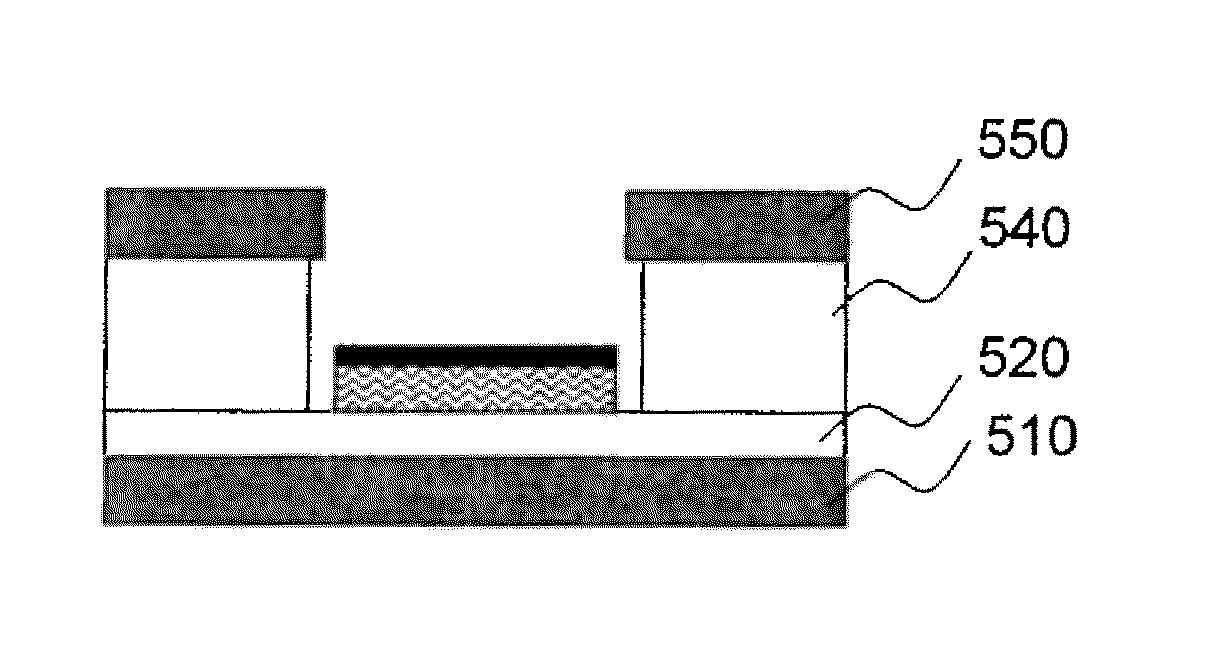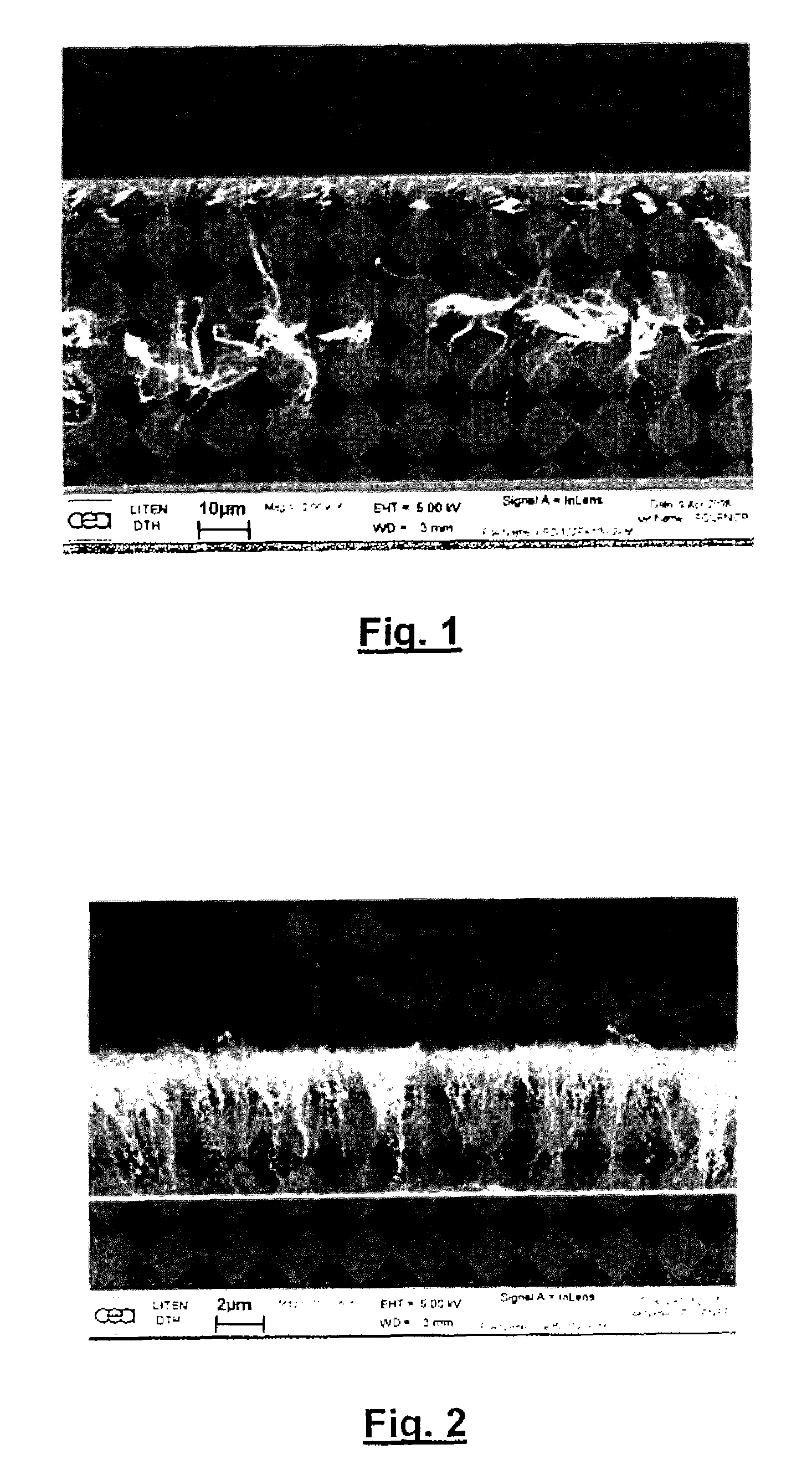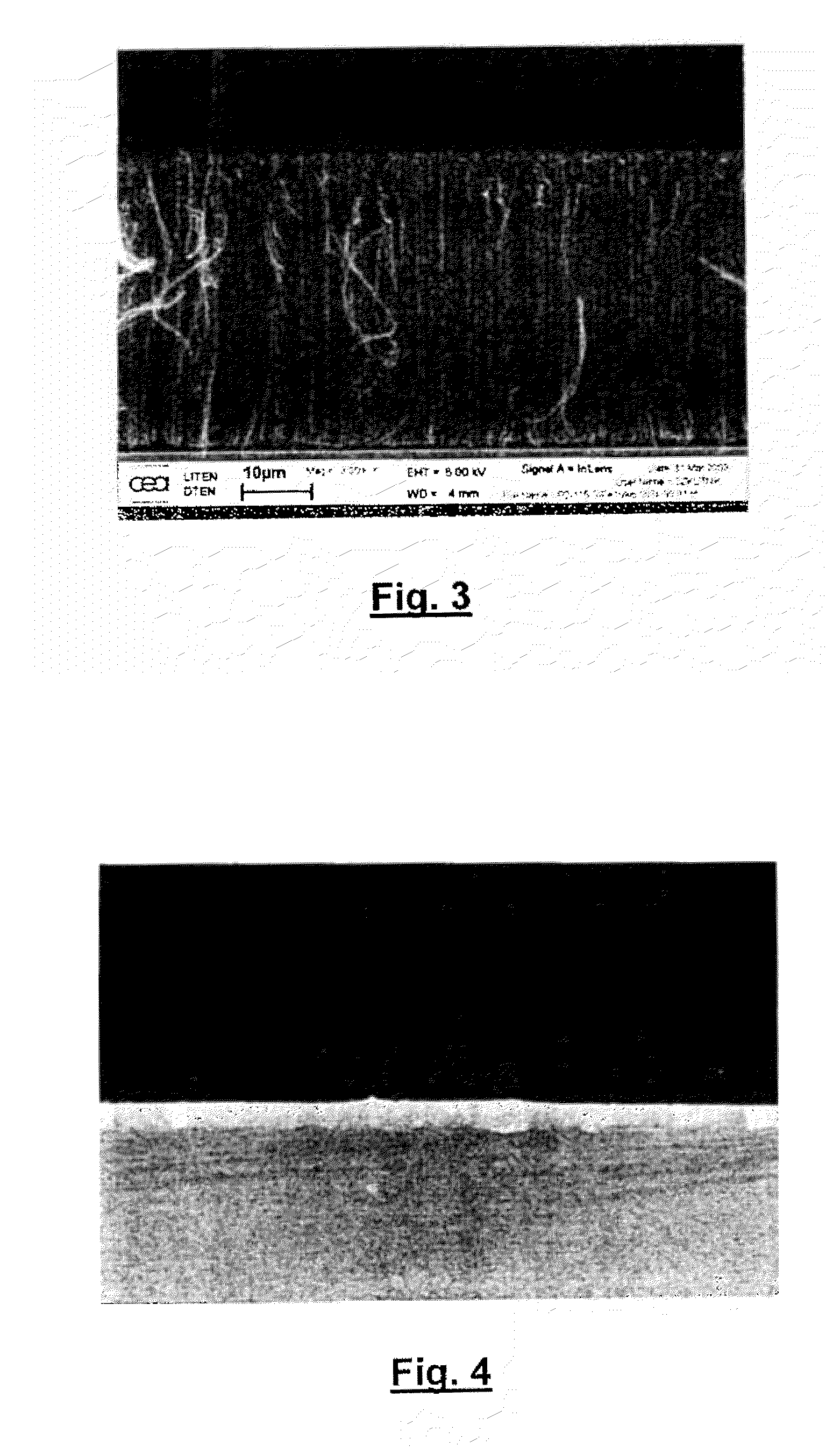Procedure for obtaining nanotube layers of carbon with conductor or semiconductor substrate
a technology of conductors and semiconductor substrates, applied in the direction of liquid/solution decomposition chemical coating, solid/suspension decomposition chemical coating, superimposed coating process, etc., can solve the problem that the growth process is unsuitable for producing interconnections in an integrated circui
- Summary
- Abstract
- Description
- Claims
- Application Information
AI Technical Summary
Benefits of technology
Problems solved by technology
Method used
Image
Examples
example 1
[0051]The substrate used was single-crystal silicon deoxidized by argon ion bombardment. The catalytic system consisted of a 1 nm layer of iron deposited on the deoxidized silicon by means of argon ion beam sputtering.
[0052]The iron layer then underwent an oxidizing plasma treatment with two successive air plasmas generated at room temperature and at a pressure of 0.4 mbar.
[0053]The specimen was placed on the electrode connected to the RF source.
[0054]The first plasma with relatively high energy induced a 120 V self-bias voltage on the specimen, enabling it to be bombarded while oxidizing it.
[0055]The second plasma with a relatively lower energy induced a 65 V self-bias voltage.
[0056]Once the oxidizing treatment had been completed, the specimen was heated to a temperature of 560° C. under a hydrogen partial pressure of 0.2 mbar.
[0057]The nanotubes were grown by then introducing a gas mixture consisting of acetylene, helium and hydrogen, with respective flow rates of 10 standard cm3 / ...
example 2
[0060]This example is identical to the previous one except for the type of deposition of the iron layer. After wet etching of the silicon with hydrofluoric acid, the iron layer was deposited by electron-beam evaporation. The rest of the growth process was identical to that of Example 1. The results obtained are similar to those obtained previously.
example 3
[0061]The substrate used was a titanium nitride (TiN) layer. The catalytic system consisted here of a 2 nm iron layer on a 5 nm amorphous silicon layer. The amorphous silicon layer and then the iron layer were deposited by means of ion beam sputtering during the same vacuum cycle.
[0062]An oxidizing plasma treatment was then carried out, under the same conditions as those in Example 1, followed by growth of the nanotubes.
[0063]Under these conditions, a dense mat of nanotubes on TiN, having a length of 32 μm and a density of 2×1011 cm−2, as illustrated in FIG. 3, was obtained.
[0064]FIG. 4 shows by comparison the case in which a single iron layer is deposited on the TiN layer without prior oxidizing treatment. The absence of nanotube growth on this layer is therefore observed.
[0065]The process for producing a CTN mat according to the invention may be used for the production of interconnect elements, especially vias in an integrated circuit.
[0066]FIGS. 5A to 5H show the various steps in...
PUM
| Property | Measurement | Unit |
|---|---|---|
| thickness | aaaaa | aaaaa |
| thickness | aaaaa | aaaaa |
| temperature | aaaaa | aaaaa |
Abstract
Description
Claims
Application Information
 Login to View More
Login to View More - R&D
- Intellectual Property
- Life Sciences
- Materials
- Tech Scout
- Unparalleled Data Quality
- Higher Quality Content
- 60% Fewer Hallucinations
Browse by: Latest US Patents, China's latest patents, Technical Efficacy Thesaurus, Application Domain, Technology Topic, Popular Technical Reports.
© 2025 PatSnap. All rights reserved.Legal|Privacy policy|Modern Slavery Act Transparency Statement|Sitemap|About US| Contact US: help@patsnap.com



